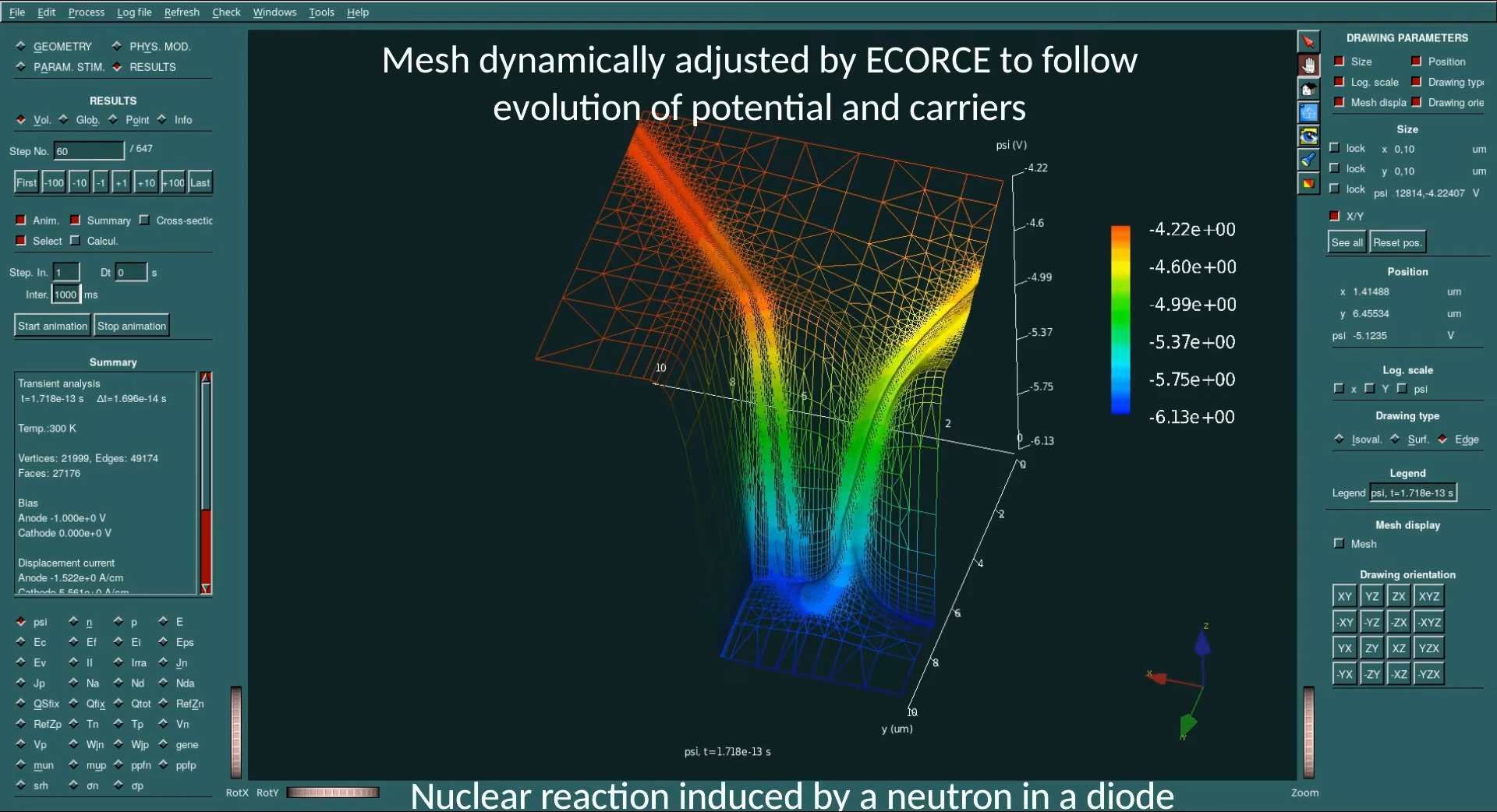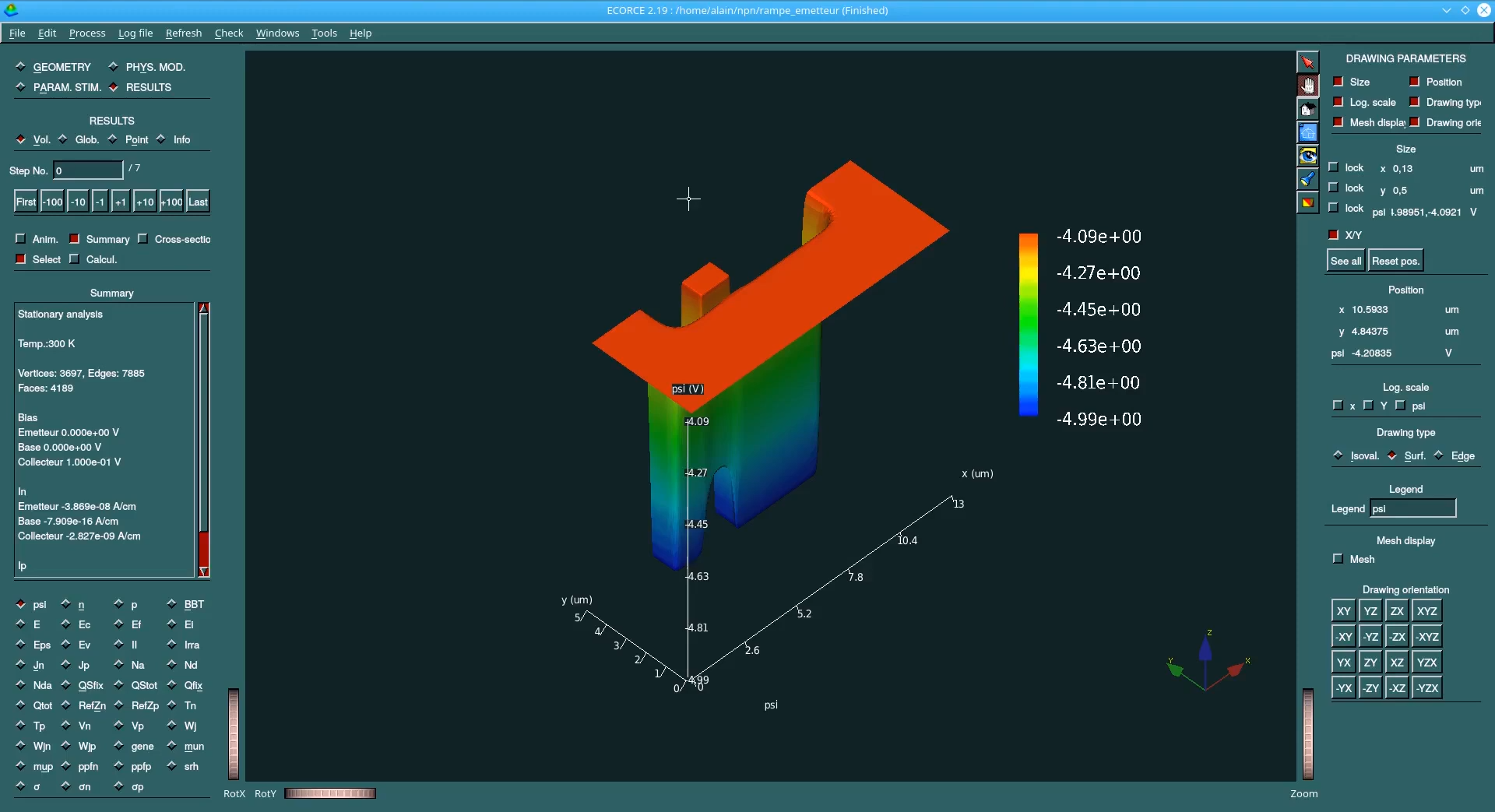ECORCE TCAD
Diode Modeling
Calculate I=f(V) characteristic of a diode. Shows how easy it is to use ECORCE.
ECORCE TCAD
Modeling of Total Ionizing Dose
Display the shift of the Id=f(Vgs) characteristics of an academic N-MOSFET, after 100 krad, then after 400K annealing.
ECORCE TCAD
Interface Geant4
Highlight ECORCE capability to handle complex particle profile created by Geant4. The dynamic mesh of ECORCE is mandatory for this.
ECORCE TCAD
Ion Definition
Geant4 Compatible
The ions profiles are taken into account according to files generated by Geant4. Thus, the definition of the ions is done in a few clicks.
Physical Equations
Actually, ECORCE integrates 1D and 2D modelling of:
- Poisson Equation (electrostatic)
- Heat equation
- Transport Equation for Electrons and Holes
- Trapping-Untrapping Equations

ECORCE TCAD
N-MOS 20nm 30krad
For ECORCE's beginners. Shows how to model a dose rate with ECORCE and gives a first view of dose effects on N-MOSFET.
ECORCE TCAD
Nuclear reaction
The neutron impact generates 2 ions, He and Mg.
The mesh is adjusted along the modelling to take into account changes in potential and carriers densities.
